Determining the Right Frequency for Business Treatment Sessions and Their Benefits
In the competitive market landscape, understanding the frequency of inspections is paramount for maintaining trust among clientele. Regular scrutiny can significantly mitigate reputation risk, ensuring that businesses remain compliant and are perceived positively by both customers and regulators. For more insights on this topic, consider exploring our detailed guide.
Establishing a proactive approach to inspection scheduling not only addresses immediate compliance needs but also contributes to long-term sustainability. By adhering to a well-defined schedule, companies can proactively address issues before they escalate, enhancing operational integrity and consumer confidence.
Understanding Industry Standards for Treatment Frequency
Inspection scheduling plays a significant role in various sectors, as it ensures compliance with legal requirements that differ across industries. Organizations must stay informed about their specific regulations to avoid penalties and maintain a good standing within their field. Access to relevant guidelines is crucial; for more detailed information on these standards, you can refer to this link.
Engaging in regular upkeep not only safeguards public access to services but also enhances client trust. A proactive approach to maintenance indicates reliability, which can significantly boost a company’s reputation. Additionally, prioritizing staff safety through routine assessments mitigates potential hazards, fostering a secure environment for employees. For food-related industries, adhering to stringent food safety standards is non-negotiable, as lapses could lead to severe consequences for health and wellbeing. Therefore, aligning treatment intervals with industry benchmarks is vital for sustained success and community confidence.
Evaluating Unique Business Needs Based on Size and Sector
Different enterprises have distinct requirements for pest management based on their size and industry. For instance, a small café might benefit from monthly visits to maintain a welcoming atmosphere for patrons, while a large manufacturing facility may require a more tailored approach due to its scale and complexity.
It is essential to consider factors such as:
- Public Access: Locations with high foot traffic need frequent inspections to ensure customer safety and maintain client trust.
- Staff Safety: Ensuring a pest-free environment safeguards employees, minimizing health risks and potential disruptions.
- Pest-Prone Zones: Industries like food service or healthcare may encounter unique challenges, necessitating a specialized pest control strategy.
The specific legal requirements in various sectors can also dictate treatment schedules. Organizations in the healthcare field must adhere to stringent regulations regarding sanitation and pest control, often implementing a quarterly plan to remain compliant and avoid legal repercussions.
Establishing a robust inspection scheduling process is beneficial across different domains. By assessing both internal and external environments, businesses can effectively mitigate risks to their reputation and operational integrity.
In summary, tailoring pest management strategies to align with the unique characteristics of a business will enhance safety and compliance while fostering trust among clients.
Factors Influencing Treatment Scheduling: Risks and Requirements
Determining the frequency of pest management involves various elements that can significantly impact the well-being of any operation. Compliance with legal requirements and maintaining food safety standards are paramount. Companies in food-related sectors must prioritize inspection scheduling to adhere to health regulations and safeguard their clientele. Those interested in optimizing these aspects can explore more at https://higginstermiteinc.com/.
Different business sizes and sectors reveal unique pest challenges. Smaller establishments might benefit from monthly visits to rapidly address emerging issues, whereas larger organizations in pest-prone zones may opt for a quarterly plan to adequately manage their environments. This tailored approach not only safeguards public access but also builds client trust, ensuring a commitment to health and safety for both customers and staff.
Furthermore, understanding specific risks associated with various types of operations can direct treatment schedules. Seasonal fluctuations and industry trends should be taken into account, allowing companies to proactively adjust their pest management strategies. By evaluating these factors, operations can maintain a safe environment while adhering to necessary regulations.
Establishing a Routine: Best Practices for Consistent Treatment
Creating a reliable schedule for treatment is paramount for maintaining operational integrity and safeguarding a company’s reputation. A well-structured quarterly plan not only ensures compliance with legal requirements but also helps manage risks associated with pest-prone zones. Regular visits can mitigate issues before they escalate, thereby preserving client trust and enhancing overall satisfaction.
To improve inspection scheduling, companies should consider implementing monthly visits to assess potential vulnerabilities and ensure compliance with established industry standards. This proactive approach protects both customers and staff, fostering a culture of safety and responsibility. Businesses with public access should prioritize consistency in treatment to prevent any reputational harm stemming from pest-related incidents.
Ultimately, aligning treatment frequency with specific business needs is vital. Each organization must evaluate its unique circumstances, including size and operational sector, to determine the most effective routine. By doing so, organizations not only comply with regulations but also enhance their service offerings and mitigate any risks associated with neglecting maintenance.

